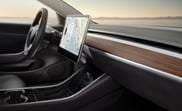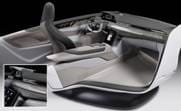We all know that dashboards play an integral part to our driving experience. As more and more digital features are added, some people refer to the dashboard as a virtual cockpit. And, undoubtedly the dashboard will play an even more significant role as self-driving vehicles enter the market.
A variety of technologies are being used behind the dashboard with connector technologies evolving as larger displays and more control inputs are becoming prevalent in cars.
Dashboards Are Changing
The future of dashboards and what’s behind them can be summed up by Elon Musk, CEO of Tesla. He spoke at the Model 3 launch this year and said, “We aimed for something that was a very simple, clean, design because in the future—really the future being now—the cars will be increasingly autonomous. So you won’t really need to look at the instrument panel all that often. You’ll be able to do whatever you want; you’ll be able to watch a movie, talk to friends, go to sleep.”
As dashboards become more integrated with digital displays and touch panels, they will start to look more like an extension of a smart phone or a tablet. The human-machine interface will become the “cockpit of the future.” It will include touch-panel functional surfaces, be linked to the mobile devices in the car, and will monitor driver behavior through the use of embedded sensors and optical devices. It will have the ability to counteract drowsiness or stress and prepare the driver to re-engage with the vehicle after leaving autonomous mode.
Connectors Play a Key Role
Connectors will also be changing to meet the new dashboard requirements. There will be increased flex circuit interconnects to manage the touch panel. Increased board-to-board interconnects will be incorporated for embedded solutions and additional computing requirements. High-speed data interconnects will manage the speed/signal density requirement to support the increasing data that is generated by sensor applications.



Concept Faurecia dashboards exhibited at the Paris auto show 2016.
Dashboard Impacts
From an interconnect point of view, dashboards are changing very quickly. So quickly in fact, that original equipment manufacturers are not able to standardize on any specific connector type. Instead, OEMs are being driving by safety, durability and reliability.
Wiring and network architectures are also impacting dashboard connectors. Vehicle networks perform much like computer networks with a combination of speed and performance. Depending where the connector is physically located in the vehicle, processor and sensor requirements vary. There could be a LIN bus complementing a CAN bus. Connector types will match the complexity required. The table below shows the differences of today’s applications. Automotive Ethernet will be used in vehicle networks to handle the higher speed and performance roles, coexisting with all the other networks.
LIN vs CAN vs FlexRay vs MOST

Source: Amphenol ICC
The Role of Connectors in Lighting
Connectors help interior designers place compact LEDs in the vehicle interior. Connector solutions for LEDs that are used for interiors have become more miniaturized. They use relatively little power, size and pitch so they are not significant obstacles. However, size does matter. Low-profile, but higher pin counts, help manage the complexity of lighting schemes.
Most LED applications are wire-to-board solutions. The cabling is the same for all models and all of the options have the same connector interface. This allows OEMs to alter lighting packages in various automotive models.
Power Handling Critical to Interior Lighting
Most of today’s vehicles operate in a 12-volt electrical system making interior lighting power requirements fairly low. The LED drivers seldom require input power over 1.0 Amps to operate.
However, with the growth of hybrid and electric vehicles that are powered by lithium batteries, many cars will soon have 48-volt electrical systems. These systems will power hybrid motors and turbochargers. They will also handle accessories ranging from mechanical or hydraulic power to electric power such as power steering, power brakes, water pump, radiator cooling, and air conditioning.
There will be multiple DC to DC converters per vehicle generating a combination of 12- and 48-volt systems within the vehicle. 12 volts will be used for traditional lighting and infotainment and 48 volts for more power-hungry components.
The Future is Here Today
Dashboards will certainly be dramatically changing at a very fast pace. Connectors are keeping up the pace with the new technology so that new features can be incorporated. Dashboards and connectors will be at the forefront of the virtual cockpit.
参阅相关产品
参阅相关产品
参阅相关产品
参阅相关产品






